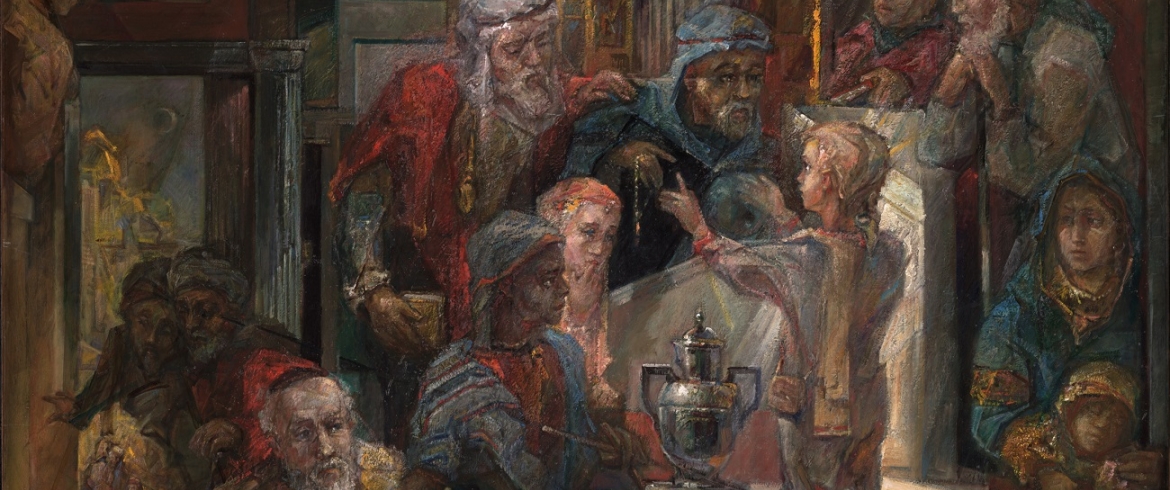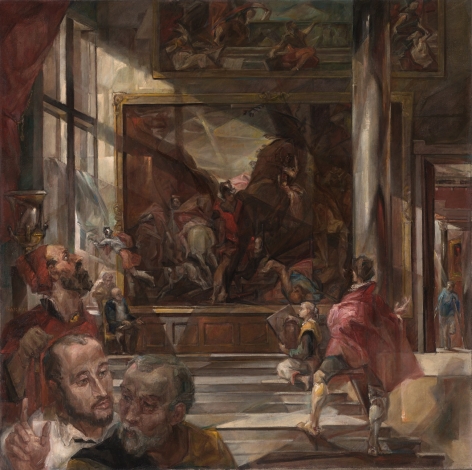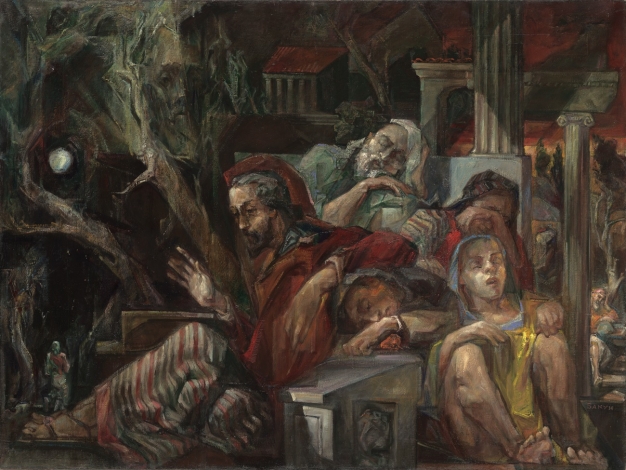Exhibition
Albert Bakun: Complex Palette

Category
ExhibitionDate
15 february 2023, 10:00 — 09 may 2023, 22:00
Price
from 600 rub
Events / Exhibition
Photo gallery
Erarta Museum presents an exhibition by Albert Bakun, an artist whose lifelong mission is to inquire into the secret meanings of works by the prominent Western European artists.
For more than six decades, Albert Bakun has been inquiring into the secret meanings of works by the prominent Western European artists. As it turned out, the old masters’ paintings and drawings are pierced with tens and hundreds of invisible lines which, just like nerves in the human body, form complex geometric shapes, knots, and surfaces, infusing the picture with movement, gravity, and density...
Bakun’s canvases contain countless planes and facets. A former student of Grigory Dlugach, the artist is an active proponent of the analytical interpretation method and, although he tends to reduce the pictorial plane to its elements, a look at his paintings affords a powerful sensation of integrity of the compositional ‘stone.’ At that, his works are not devoid of theatrical drama: densely populated and multidimensional, they continue to live the life of the picture that originally inspired them, infused with and transformed by the artist’s thoughts. The painter can resolutely add new objects, events, and characters to a classical scene, acting simultaneously as viewer, scholar, and creator. ‘The artist, the painting, the viewer – once they meet, they engage in a dialogue. This dialogue is possible only when the artist and the viewer both speak the same language. I seek to preserve this language, update it, and pass it on to the next generations,’ comments Bakun.
The series of paintings showcased at Erarta was created in the 2000s and has at its core a distinctive interpretative approach: the artist demonstrates his signature translation of signs and symbols onto the canvas and attempts to restore the ‘lost alphabet of painting.’ At the same time, these large-scale, compositionally complex, and vibrantly colourful canvases seem to encapsulate the artist’s years-long experience of rethinking the most famous classical paintings. Their spatial arrangement is populated with dots, blots, and strokes that are merged through visual strain. This produces the invisible lines of flux that exist only in our mind – well-structured and acting to deepen the impression, reinforce the conceptual framework, and tie the composition together.



